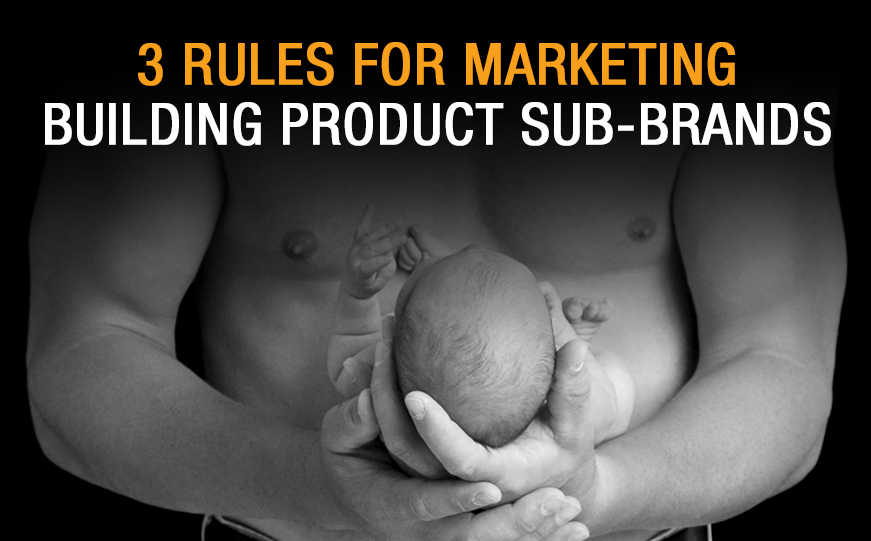Quick: what company developed early versions of the digital camera, positioning them to be innovators in the category?
Give up?
The answer is Kodak. That’s right, the company that has been rendered all but obsolete by the digital photography age — actually created early versions of the technology.

They had it all in their hands. If only they had continued to work on it… Kodak could have, one assumes, transitioned to being a leader in the new era of the digital imaging channel.
But at the time, Kodak was a juggernaut of the film photography world. Continuing work on the digital camera would have taken
away resources from their primary profit center. So the Kodak digital project ultimately died a quiet death.
Since then, Kodak has been left in the dust by the likes of Sony, Canon, Samsung and Apple.
We’re not here to wax nostalgic about the good old days of photography. But we do want to talk about maximizing the value of sub-brands.
Why have a sub-brand?
A recent article discusses how sub-brands can sometimes grow up and eat their parents. The article gives the example of clothing retailer Gap creating Old Navy.
Old Navy eventually became a bigger, even more successful brand than its parent.
The Building Products industry is no stranger to sub-brands. Many of the industry’s biggest companies have one or two additional brands in their portfolios, either that they created… or that they acquired.
There are many reasons why having a sub-brand is a good idea. In fact, this might be more true in the Building Products business, and building materials marketing than in any other category.
In some cases, a company might want to delineate their brands by price point — having entry-level and aspirational products — along with their flagship brands. This strategy allows them to market to each audience without devaluing their other brands.
In most business models, brands fall along distribution lines. One brand might be sold through distribution… one through big box retailers… and one online. Yet the products might be largely indistinguishable.
A third strategy might be for purposes of innovation. This is where Kodak might have gone, if they had the foresight. Consumers, at that time, may well have rejected a Kodak-branded digital camera. But why not instead, consider giving the camera a different brand and start to test that market?
Who knows where they might have ended up?
Regardless of the reasons behind them, we think there are three rules marketers of sub-brands should follow as they grow and change with the market:
Stay true to its mission
Often — in the lifetime of a brand — there is a temptation to grow and expand your footprint. Yet, this can cause problems of overlap and cannibalization with the parent brand.
Should you be marketing a brand targeted at contractors, for example, resist the urge to start marketing it to consumers. Even if the brand starts to become popular with end-users.
If you respond to that market change, you may well find yourself competing with your own flagship… which can cause a huge waste of resources.
Support it
The reason Kodak lost out on the digital camera is because it didn’t have the spine and the foresight to support it internally.
They were a film company. Period.
Particularly when you’re dealing with innovation and emerging technology, it behooves you to play the “long game”.
So support your nimble, disruptive sub-brand. It just might grow up to be bigger and better than its parent ever was. That might cause some short-term problems, but if you manage it correctly, the results could be dramatic.
Or kill it
Always support and nurture your sub-brands. Except when you shouldn’t.
Sometimes, brand messages get confused. A company might find itself with too many brands in its portfolio, making it difficult to stay on top of marketing all of them.
In those cases, consolidation might be in order. When a sub-brand is losing its relevance — or is taking sales away from the flagship — it might be time to put it out of its misery. To review a case study on how we handled a recent sub-brand assignment… utilizing SKU rationalization for Panolam Surface Sytems and their sub-brands, Nevamar and Pionite, click here.




